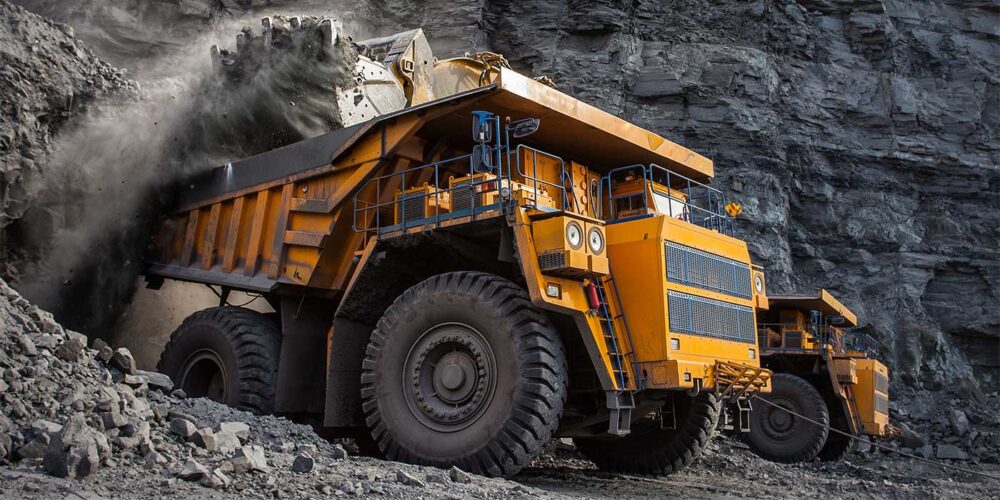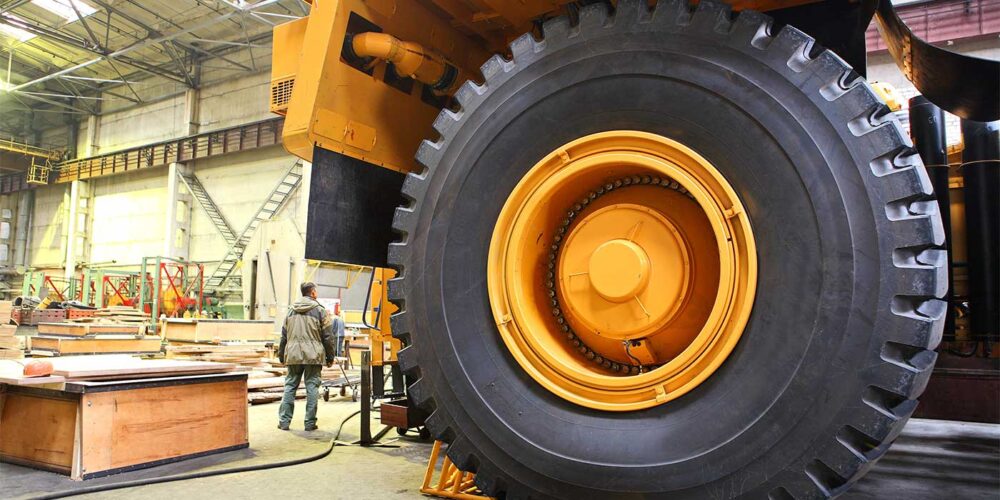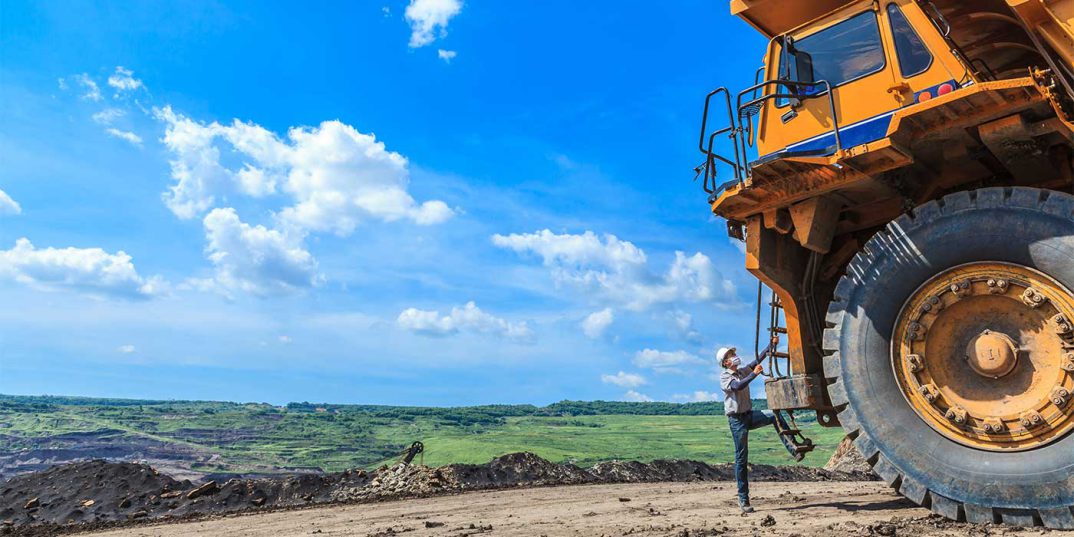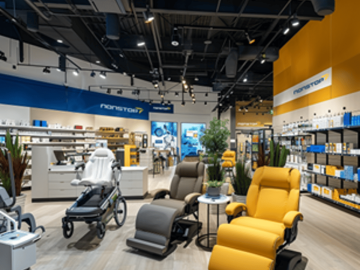When tire end-users encounter demanding conditions, it’s up to tiremakers to develop the technology and products to withstand any environment — and it’s up to tire dealers to connect their clients with the right rubber for the job.
Off-the-road (OTR) tires for mega-machines like mining trucks or earth movers, for example, are exposed to some of the world’s harshest conditions. With a focus on safety, longevity and performance, these hardworking OTR tires are constructed to withstand the pressures of the jobsite. Dealers in this segment will find success if they keep up with market trends, tire technology and customer needs.
OTR tires and Jumbo OTR tires are mainly used in scenarios that are closely related to the economy: mining, construction, engineering construction, docks, etc.
Steady growth and changing trends
The OTR tire sector has experienced significant growth momentum during the past three years, according to Stephen Reynolds, OTR sales director for Triangle Tire USA.
“Thanks to many favorable factors in the replacement and original equipment markets, the global production and sales growth of off-road tires are much higher than PCR (passenger car radial) and TBR (truck, bus and radial),” he says. “Driven by the demand for non-ferrous metals and energy, the demand for OTR — mine, construction, and ports and handling — is expected to continue to grow. It will reach about $16 billion in 2024 and will grow by about 5.6% per year from 2024 to 2029.”
Impacting that growth are several trends, including the global economy, laws and regulations, and sector innovation.
OTR tires and Jumbo OTR tires are mainly used in scenarios that are closely related to the economy: mining, construction, engineering construction, docks, etc.
“Therefore, economic prosperity determines the demand for non-ferrous metals and energy,” Reynolds says. “It determines the start of engineering and construction projects and directly affects whether port terminals are busy. It directly affects the number and start-up rate of OTR machinery vehicles in the corresponding scenarios, and it determines the replacement and new demand for OTR tires and jumbo OTR tires.”
Laws and regulations, especially trade protectionism, covers a broad range of aspects like engine emission standards in the engineering of OE machinery all the way to the EU’s/EUDR zero deforestation law, which increases the cost pressure of upstream raw materials and finished products, according to Reynolds.
“An unintended consequence is that these regulations also accelerate the survival of the fittest in the global industry, so having good foresight and remaining flexible are important skills,” he says.
When it comes to innovation, the production and sales trends, as well as new model research and development of the top 10 producers of big machines (OEMs) in the world, play a vital role for OTR tire suppliers, according to Reynolds, who adds, “As a manufacturer, it is critical for us to anticipate OE trends and design/plan for them, rather than to react after the fact.”
The final piece impacting OTR tire trends is related to the end-user. A growing number of consumers seek green products, comfortable products, high-speed OTR, multi-purpose OTR, and air-free industrial tires, according to Reynolds.
End-users also have shown increased demand for wider tires, higher load capacities and TPMS systems, according to Robert Gruijters, head of marketing for Magna Tyres Group.
 Today’s customers are more data-driven, resulting in increasing interest in TPMS systems.
Today’s customers are more data-driven, resulting in increasing interest in TPMS systems.
OTR tire technology
In order to excel in the demanding environments of mining and construction, OTR tires for mega-machines must be manufactured with a number of technological advancements.
While most well-known tiremakers can manufacture a quality casing, performance success is more closely related to rubber compounding, which is an important focus area for Magna Tyres, according to Gruijters.
Tire design and manufacture must also prioritize safety, long life and high-value performance, Reynolds says.
“Safe production is the primary and core task of the mining industry worldwide,” he explains. “As the only vehicle component engineered to come into contact with the ground, tires play many critical roles such as load bearing, driving and braking, durability, handling performance, and absorbing road impact and vibration. It is critical to engineer all of these features into the design of the tire for the safe operation of mining vehicles.”
When it comes to longevity, mining customers need their vehicles to operate efficiently, according to Reynolds.
“Avoiding OTR tire quality problems reduces equipment downtime and positively affects the normal operation of vehicles; long life for giant tires also greatly promotes mining efficiency and volume. That is what mining customers are really looking for,” he says.
Since tires are the second-largest proportion of a mine’s operating costs, the cost per mile, or per hour, determines the core competitiveness of each tier of well-known tire brands, according to Reynolds.
“Therefore, on the one hand, OTR tire manufacturers must continue to innovate technologically to improve product performance; on the other hand, they must innovate their designs to provide better economic benefits to customers,” he says. “These two truths sometimes compete to create a delicate balance between performance and cost. Tire manufacturers like Triangle, who are able to provide OE level performance along with competitive pricing, truly bring value to the market not only for the dealers, but also for the end users, providing a win/win scenario.”
 A growing number of consumers seek green products, comfortable products, high-speed OTR, multi-purpose OTR, and air-free industrial tires.
A growing number of consumers seek green products, comfortable products, high-speed OTR, multi-purpose OTR, and air-free industrial tires.
The tire dealer connection
From selection and installation to service, matching end users with the right OTR tire for their mega-machine is no small task. First, it’s important for tire dealers to be in-tune with what these customers find most important.
Most customers aren’t interested in only one particular aspect,” Gruijters says. “Most are looking for a mix of ingredients that fit their requirements.”
He says that today’s customers are more data-driven, resulting in increasing interest in TPMS systems.
“The Magna TPMS system gives the customer a lot of data, is connected 24/7, and provides a lot of insights for the tires related to the machine,” Gruijters says.
The primary focus for dealers should be reduced downtime, according to Reynolds, who says, “This reflects the comprehensive strength and performance of the product and service. It also creates productivity and value to the maximum extent for customers, and that is universally what everyone is seeking.”
In order to excel when it comes to service, it’s important that tire dealers keep in mind the uncertainty of the OTR environment, as well as the diversity of large equipment.
“In addition to normal tire marketing experience, dealers need to have field engineers to work with them, providing professional knowledge and tools to effectively track and maximize the life of these tires,” Reynolds says. “Manufacturers generally supply field engineers to work with their dealers when needed, but training is available to dealer personnel to become proficient, as well. It’s important for anyone doing this type of field work to remember that the industry is constantly evolving, so their education should be as well.”
He emphasizes that OTR pre-sales happen through on-site inspection, operation tracking and maintenance. After-sales guidance and training are all indispensable, and each link will bring more added value to customers.
“(Triangle) seeks win-win scenarios that require cooperation with our dealers and the end users, so being a Triangle brand agent for the entire life cycle is critical,” Reynolds says. “Anyone can be a tire trader or middleman, but that does not add value to your customers’ experience, and it doesn’t help anyone achieve their long-term goals.”



